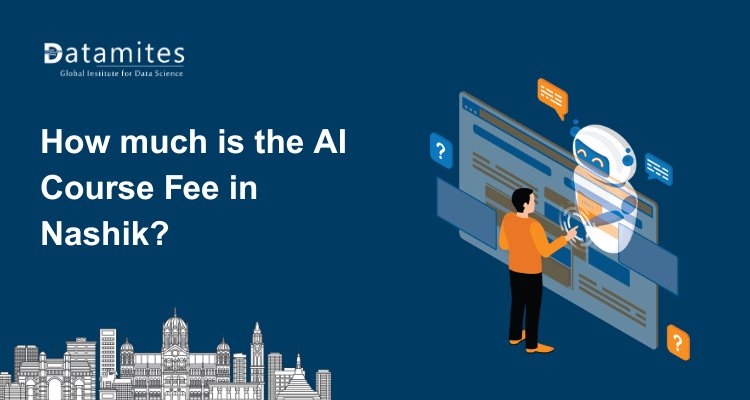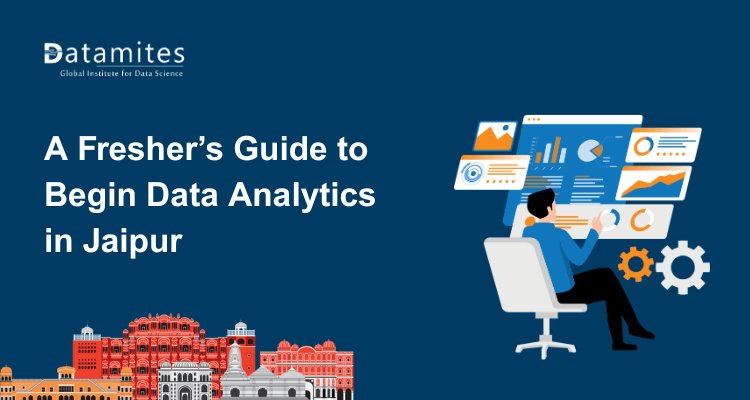Data Science Project Lifecycle: From Data Collection to Deployment

W. Edwards Deming once said, "In the absence of data, you’re merely sharing your personal beliefs." This highlights the crucial importance of data in guiding sound decision-making. In the rapidly evolving digital world, organizations are flooded with data, making it a key asset for cutting through mere opinions. However, extracting actionable insights from this vast pool of information requires a systematic approach. The data science project lifecycle serves as a roadmap, guiding teams from the initial stages of data collection to the final deployment of their findings.
This article delves into the importance of the data science project lifecycle, highlighting how it plays a crucial role in converting raw data into meaningful, actionable insights. Understanding this lifecycle is vital for anyone involved in data science, whether you're a seasoned professional or a newcomer seeking knowledge through a data science course or data science training. By the end of this blog, you will have a comprehensive understanding of each phase of the lifecycle, empowering you to effectively manage data science projects.
Understanding the Data Science Project Lifecycle
The data science project lifecycle provides a systematic approach that helps data experts turn raw data into meaningful insights and informed decisions. It encompasses a series of phases that data scientists follow to ensure that their projects are effective and yield meaningful results. This lifecycle is not linear; rather, it is an iterative process where feedback from one phase can influence previous stages.
Major Phases of the Lifecycle
The progression of a data science project typically follows a sequence of essential phases.
- Problem Definition: Identifying the business challenge and setting objectives.
- Data Collection: Collecting pertinent information from multiple sources.
- Data Preparation: Preparing and refining the data for analysis.
- Exploratory Data Analysis (EDA): Analyzing data to uncover insights.
- Model Building: Developing predictive models.
- Model Evaluation: Assessing the performance of the model.
- Deployment: Deploying the model in a practical, real-world setting.
- Maintenance and Updates: Continuously monitoring and updating the model.
Each phase is crucial, and understanding them will enable you to effectively navigate your data science projects.
Refer these articles:
Phase 1 - Problem Definition
Identifying the Business Problem
The first step in any data science project is to clearly articulate the problem that needs to be solved. This phase involves understanding the business context, identifying pain points, and determining the goals of the analysis. A well-defined problem statement sets the stage for the entire project and ensures that the data collected aligns with the objectives.
Setting Objectives
Once the problem is identified, it's essential to define success metrics and objectives for the project. Objectives provide a clear direction and help measure the project's success. Consider the following when setting objectives:
- Specificity: Clearly define your desired outcome or goal.
- Measurable: Establish quantifiable metrics to evaluate success.
- Achievable: Make sure the goals are achievable based on the resources at hand.
Engaging with stakeholders is also crucial during this phase to align on goals and expectations. Collaboration with team members from various departments can bring diverse perspectives and enhance the project’s focus.
Phase 2 - Data Collection
Sources of Data
The subsequent phase in the lifecycle involves gathering data, which can be sourced from various origins.
- Internal Databases: Accessing data stored within the organization's systems.
- APIs: Using application programming interfaces to pull data from external services.
- Web Scraping: Collecting data from websites through automated scripts.
Identifying the right sources of data is critical, as the quality of data directly impacts the project's outcomes.
Types of Data
Understanding different types of data is also vital. Data can be categorized into:
- Structured Data: Structured information, including databases and spreadsheets.
- Unstructured Data: Disorganized data, including text, images, and videos.
Each type of data has its own relevance and applicability in various contexts.
Best Practices for Data Collection
To guarantee efficient data gathering, keep these best practices in mind:
- Ethics and Compliance: Always follow ethical standards and comply with legal obligations.
- Data Quality: Ensure that the data collected is accurate and relevant.
- Documentation: Keep detailed records of the data sources and methodologies used for future reference.
By following these best practices, you can set a strong foundation for your data science project.
Phase 3 - Data Preparation
Data Cleaning
Data cleaning is a crucial phase in readying your dataset for analysis. This process entails recognizing and correcting problems such as:
- Missing Values: Addressing gaps in the dataset by imputing values or removing incomplete records.
- Duplicates: Identifying and removing duplicate entries to maintain data integrity.
Having clean data is essential for ensuring precise analysis and effective modeling.
Data Transformation
After cleaning, data must be transformed into suitable formats for analysis. This can involve:
- Normalization: Scaling data to a specific range.
- Encoding: Converting categorical variables into numerical formats.
Additionally, feature engineering plays a pivotal role in this phase, as it involves creating new variables that enhance the model's performance.
Refer these articles:
- What is Certified Data Scientist Course
- Data Science Career Scope in India
- Data Scientist Salary in India
Phase 4 - Exploratory Data Analysis (EDA)
Purpose of EDA
Exploratory Data Analysis (EDA) is a vital phase in the data science lifecycle that allows data scientists to delve deeper into their datasets. Exploratory Data Analysis (EDA) reveals underlying patterns, trends, and irregularities within the dataset. It’s not just about summarizing the data; it’s about discovering the underlying relationships that can inform future modeling.
Techniques and Tools
Common techniques and tools used in EDA include:
- Visualizations: Utilizing charts, graphs, and plots to represent data visually.
- Statistical Summaries: Utilizing statistical measures like the mean, median, and standard deviation to encapsulate the essential features of the dataset.
Tools like Pandas and Matplotlib are invaluable for performing EDA, enabling data scientists to extract insights and make informed decisions.
Insights Gathering
The insights gathered during EDA directly inform the modeling phase. By identifying relationships and trends, data scientists can select appropriate features and algorithms that will enhance the model's effectiveness.
Phase 5 - Model Building
Choosing the Right Model
Model building is a crucial phase where data scientists develop predictive models based on the identified business problem. The selection of an algorithm is influenced by the specific characteristics of the problem at hand.
- Classification Models: Used for categorical outcomes (e.g., decision trees, logistic regression).
- Regression Models: Employed for continuous outcomes (e.g., linear regression, support vector machines).
Selecting the right model is pivotal for achieving optimal performance.
Training the Model
Once a model is chosen, it undergoes a training process where it learns from the dataset. Cross-validation techniques are commonly used during this phase to ensure the model generalizes well to unseen data.
Hyperparameter Tuning
Hyperparameter tuning is the process of adjusting model parameters to optimize performance. It can significantly impact the model's effectiveness, so it's essential to systematically test different configurations.
Phase 6 - Model Evaluation
Metrics for Evaluation
Evaluating the performance of the model is critical for determining its effectiveness. Common metrics include:
- Accuracy: The proportion of correct predictions.
- Precision and Recall: Metrics employed to evaluate the pertinence of the model's predictions.
- F1-Score: A balance between precision and recall, providing a single score for performance.
Validation Techniques
To validate the model, techniques such as train-test split and k-fold cross-validation are employed. These methods help ensure that the model is robust and capable of making accurate predictions on new data.
Interpreting Results
Interpreting evaluation metrics is crucial for making informed decisions. Understanding what the metrics signify can help data scientists identify areas for improvement and refine their models accordingly.
Refer these articles:
- Data Science Course Fee in India
- Data Science Course Fee in Hyderabad
- Data Science Course Fee in Bangalore
Phase 7 - Deployment
Deployment Strategies
After evaluating and fine-tuning the model, the subsequent step is to deploy it. Various deployment methods include:
- Batch Processing: Running the model on a schedule to process large volumes of data at once.
- Real-Time API: Implementing the model as an API to provide instant predictions based on live data.
Choosing the right deployment strategy depends on the specific needs of the business.
Monitoring Performance
Monitoring the performance of the deployed model is vital for ensuring its continued effectiveness. This includes tracking key performance indicators (KPIs) and analyzing user feedback.
Feedback Loop
Implementing a feedback loop is essential for ongoing model refinement. By collecting data on model performance, data scientists can make necessary adjustments to improve accuracy and relevance.
Phase 8 - Maintenance and Updates
Importance of Maintenance
Regular maintenance of the model is essential to ensure its ongoing effectiveness. As business needs evolve and new data becomes available, models may require updates or retraining.
Adaptation to New Data
Models must adapt to new data over time. Regularly revisiting and updating the model can help prevent degradation in performance and ensure that it continues to provide valuable insights.
Continuous Learning
The field of data science is ever-evolving. Continuous learning and improvement are critical for staying current with new techniques, tools, and best practices. Participating in a data science course or data science training can provide valuable skills and knowledge to stay ahead in this fast-paced field.
Challenges in the Data Science Lifecycle
The data science lifecycle involves multiple phases, each with its own unique challenges. Here’s an expanded view of the common issues and potential solutions in this lifecycle:
Common Issues
Throughout the data science project lifecycle, various challenges may arise. Here are several common issues that often occur:
- Data Privacy Concerns: Protecting confidential information is essential.
- Model Interpretability: Ensuring that models are understandable to stakeholders can be challenging.
- Scalability: As data grows, ensuring that models can scale effectively is essential.
Solutions
To address these challenges, you might explore the following strategies:
- Implement Data Governance: Establishing clear data governance policies can mitigate privacy concerns.
- Focus on Explainability: Use techniques that enhance model transparency to improve stakeholder trust.
- Invest in Scalable Infrastructure: Utilizing cloud-based solutions can provide the necessary scalability.
Best Practices for a Successful Data Science Project
Successfully executing a data science project involves several best practices that span the entire project lifecycle, from problem definition to deployment and maintenance. Here are several essential strategies to guarantee success:
- Collaboration: Involve cross-functional teams (business, IT, domain experts) to align on goals. Maintain regular communication, define team roles, and use collaborative tools like GitHub for real-time sharing.
- Documentation: Keep thorough documentation, including project charters, methodology logs, insights, and version control to ensure traceability and accountability.
- Iterative Approach: Use agile methods for flexibility, create early prototypes, evaluate models regularly, and gather stakeholder feedback to refine outcomes.
- Data Quality and Management: Implement strong data governance, validate data regularly, and build robust data pipelines to maintain integrity and compliance.
- Knowledge Sharing: Conduct post-mortems, encourage continuous learning, and engage with the data science community to share insights and improve skills.
- Ethical Considerations: Address biases, maintain transparency, and assess the social and ethical impact of your models to build responsible solutions.
In summary, the data science project lifecycle is a comprehensive framework that guides data professionals from data collection to deployment. Understanding each phase is essential for transforming raw data into valuable insights. By implementing these practices, you can enhance your data science projects and drive meaningful outcomes.
Explore further by engaging in a data science course or data science training to deepen your knowledge and skills in this exciting field!
DataMites is a premier global institute dedicated to training in data science, artificial intelligence, machine learning, and related fields. We offer accredited certifications and hands-on learning experiences led by industry experts. With over 10 years of trust and more than 100,000 learners, our Certified Data Scientist Course, accredited by IABAC and NASSCOM FutureSkills, equips individuals with the skills needed to thrive in tech-driven careers. DataMites Institute courses cater to both beginners and professionals, effectively bridging the skills gap in emerging technologies.





